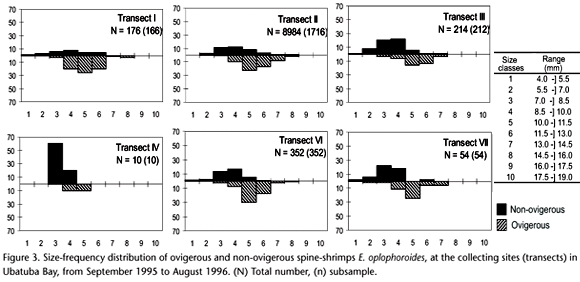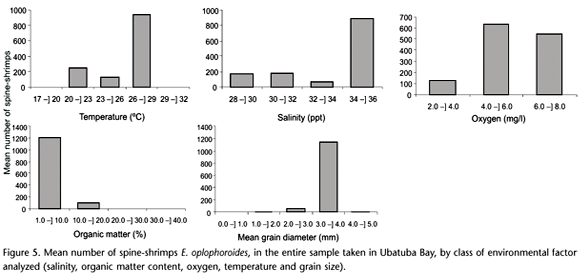The population biology of Exhippolysmata oplophoroides (Holthuis, 1948) was studied in Ubatuba Bay (23º26'S, 45º02'W), Ubatuba, São Paulo, Brazil, from September/1995 to August/1996. Each sampling comprised eight transects (14 000 m² each), sampled monthly with three repetitions. The specimens were classified with respect to the presence or absence of eggs in the abdominal appendages. Spine-shrimps occurred only on six transects, being most abundant on transect II, with the highest incidence in late spring and throughout the summer months. Ovigerous and non-ovigerous shrimps were present year-round, in an approximately similar proportion (1:1). Site II in Ubatuba Bay is characterized by high salinity and oxygen values, temperature between 26 and 29ºC, low organic matter content in the sediment, and a bottom composed of very fine sand; these environment and biological features allow the establishment and maintenance of the population of E. oplophoroides.
Distribution; population structure; reproduction; Southeastern Brazil; spine shrimp

 Population biology of spine shrimp Exhippolysmata oplophoroides (Holthuis) (Caridea, Hippolytidae) in a subtropical region, São Paulo, Brazil
Population biology of spine shrimp Exhippolysmata oplophoroides (Holthuis) (Caridea, Hippolytidae) in a subtropical region, São Paulo, Brazil







